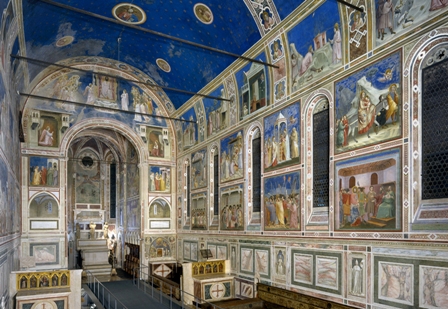Friday, October 14: The Architectural Heritage of the city of Padua
Meeting point: 11.40 am in front of the Eremitani Church in Padova
(Adress: Piazza Eremitani, 9, Padova – see map - possible regional trains to reach Padova: 8.42; 10.42; check www.trenitalia.it )
ATTENDANCE
The visit is compulsory for students attending the Art & Architecture in Renaissance Venice course
PROGRAM
11.40 Meeting in front of the Eremitani Church in Padova (Piazza Eremitani, 9, Padova)
You should reach the meeting point on your own.
11.45 – 12.15 Visit to Eremitani Church
…………….. Visit to Scrovegni Chapel (reserved only to Art & Architecture in Renaissance Venice students)
…………….. Visit to Palazzo del Bo
14.00-14.45 Free time for lunch in padova
…………….. Visit to the Scoletta del Santo and Basilica del Santo
16.30 Estimated ending time of the visit
The visit will be guided by Prof. Barbara Savy and PhD. Sarah Ferrari
You will arrange the return trip on your own – you should purchase your own train ticket and VIU will refund your documented travel expenses.
The maximum refundable amount is € 4.10 – corresponding to the cost of a regional train ticket from Padova to Venezia. To be refunded, please bring your train ticket to the Front Office.
COSTS
Students enrolled in the Art&Architecture in Renaissance Venice course will have all costs sponsored or refunded by VIU.
The cost for other students is € 5.00 for the entrance tickets, due to the Front Office by Monday, Oct. 10.
MORE INFO
Eremitani Church, one of the most important churches in Padua
Scrovegni Chapel, the most complete series of frescoes executed by Giotto in his mature age, which represents a true masterpiece of the 14th century Italian art (this visit is reserved to F1603 Art and Architecture in Renaissance Venice students)
Palazzo del Bo, whose outstanding cultural and artistic heritage belongs to the University of Padova; its most known rooms are Aula Magna and the world’s first permanent anatomical theatre
Basilica di Sant’Antonio da Padova, which the Paduan people call Il Santo (“the Saint”): it is the most important monument in the city and one of the most popular Italian churches, hosting major artworks.

